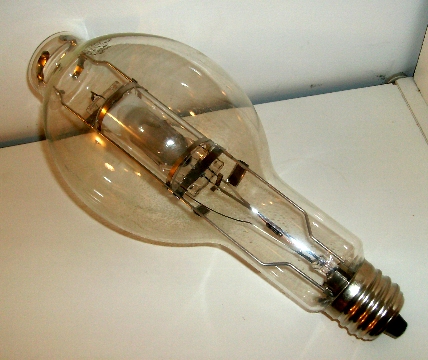Just for information purposes i need to ask why the old crt Monitors and TV had a curvy surface for a screen rather than being planar.
I would also like to know, how can i discover the information of what the resolution of an old CRT TV is.
+ Reply to Thread
Results 1 to 17 of 17
-
-
They had to be circular to maintain beam focus from the CRT neck mounted gun. Flat tubes required both dynamic beam focus and ideally velocity compensation to make the focus and brightness equal accross the flat tube.Originally Posted by therock003
Old TV sets were analog. Vertical resolution is set by the scan lines (486 for NTSC, 576 for PAL) and Kell's law that says perceived resolution for an interlace CRT is about 70% of the scan lines or about 340 for NTSC.
Horizontal resolution depends on monochrome bandwidth and color filtering. Maximum "horizontal lines of resolution" for a good CRT TV is about 700 lines but for broadcast NTSC that drops to about 330. This assumes a good comb filter decoder in the TV (e.g. Sony XBR). A cheap notch filter TV will have much less horizontal resolution.
HD CRT sets had resolutions from about 800x600 up to ~1440x1080 (e.g. Sony 960). Typical processing for lower end models maxed around 960x540 even though they accepted 1920x1080i and 1280x720p input.Recommends: Kiva.org - Loans that change lives.
http://www.kiva.org/about -
Being analog does that mean that they have no pixels and the signal displayed is always interlaced? Does this statement hold true?
What does it mean that the perceived vertical resolution is 70% of the scan lines?Does it mean that there's 30% loss?
So TVs were designed with various resolutions in respect to where they were distributed? -
you can't define analog signals using digital terminology..
it's like me asking you how many gallons of sleep did you get last night. -
As far as I remember, all analog TV worldwide is interlaced. The screen is made up of phosphor dots, so I guess that you can use the term of pixels to describe them.Originally Posted by therock003
The way that the image is scanned prevents the eye from seeing everything, so the brain basically is processing only about 70% of the information.
The PAL TV standard has higher resolution than NTSC, so yes - there are different resolutions of analog TV based upon the country that you live in.
Disclaimer - All my responses are based on what I was taught and what I remember from years ago, so if anything that I said is slightly off, then I do apologize for any discrepancies "I will not be pushed, filed, stamped, indexed, briefed, debriefed, or numbered! My life is my own" - the Prisoner
"I will not be pushed, filed, stamped, indexed, briefed, debriefed, or numbered! My life is my own" - the Prisoner
(NO MAN IS JUST A NUMBER)
be seeing you ( RIP Patrick McGoohan ) -
Old CRT TVs could only display interlaced video. They had no pixels horizontally, only a continuous wave form. Vertically they had separate scan lines. So, in a sense, they had pixels vertically.
As the frequency of an analog signal reaches the bandwidth limit of the device the amplitude of the signal falls off gradually. So if a video claims 450 lines of horizontal resolution that doesn't mean that 450 alternating black and white lines displays perfectly but 451 lines fails. It means that as a sine wave approaches the bandwith limit the amplitude of the swings will decrease. Instead of bright white and full black bars you'll see not-so-bright white and a darkish gray bars. As the frequency continues to rise the amplitude swings will get smaller and smaller. Eventually, there will be nothing but a solid gray. The quoted bandwidth is often the point at which the output amplitude is half the input amplitude. -
We are talking traditional TV sets here. They were interlace by definition. Progressive TV sets (not industrial) began with EDTV 720x480 around 2002 optimized for progressive DVD viewing.Originally Posted by therock003
No it means that a sample of people could not see a difference at 70%.Originally Posted by therock003
No, the display was usually the same world wide. If you feed an RGB signal from a high quality source, the results would be similar world wide and mostly better than possible with TV broadcast.Originally Posted by therock003
PAL systems broadcast with 5.0 up to 8.0 MHz channel bandwidth usually with 625 lines (576 visible) but only with 25Hz frame rate. NTSC was confined to 4.2 MHz channel bandwidth in a 6MHz channel with 525 lines (486 visible) but with faster 29.97Hz frame rate.
So most PAL viewers had better static resolution but NTSC had faster frame update (better motion representation).Recommends: Kiva.org - Loans that change lives.
http://www.kiva.org/about -
Exactly. And digital systems (with pixels) can be evaluated the same way. Analog TV specs are based on typical user perception whereas computer display specs tend to be based on what is on the screen vs. what can be seen by a human.Originally Posted by jagabo
This difference extends to HDTV. Most ATSC/DVB decisions were based on human perception studies because the task was to limit transmitted bandwidth. Computer displays are specified in technical terms without regard to human perception.Recommends: Kiva.org - Loans that change lives.
http://www.kiva.org/about -
After another few years, CRT TV information can only be found in Smithsonian.
-
There are two reasons that early picture tubes were not flat and square. The other one is that they are blown glass, and rounded shapes are much easier to make.
-
The way to make a flat square CRT without dynamic beam focus is to make the neck very deep like these oscilloscpe tubes. Just imagine a 27" TV that is ten feet deep.
 Recommends: Kiva.org - Loans that change lives.
Recommends: Kiva.org - Loans that change lives.
http://www.kiva.org/about -
Oh, "make the neck very deep". I though only size matter.

Note: Stuff from"Doc" Edgerton. -
Size does matter
 "I will not be pushed, filed, stamped, indexed, briefed, debriefed, or numbered! My life is my own" - the Prisoner
"I will not be pushed, filed, stamped, indexed, briefed, debriefed, or numbered! My life is my own" - the Prisoner
(NO MAN IS JUST A NUMBER)
be seeing you ( RIP Patrick McGoohan ) -
I will enter this one as a "tube war" candidate.

Note : edDV, yours are next. -
Black & White analog TVs had a uniform phosphor coating on the tube. A single electron gun fired electrons at the screen and the path of the electrons was controlled magnetically. The intensity of the electron beam determined the brightness (relatively) of the image at any point. The beam swept from side to side and in rows across the screen with a gap between rows. A second scan laid down another set of horizontal rows in between the rows laid down in the previous scan (interlace). So you can't really refer to those sets as having pixels or even the equivalent.
Color TVs came out with 3 electron guns, red, blue & green. They had masks between the electron guns and the screen to control where the beams were allowed to reach the screen. The masks had little round holes generally arranged in a triangle. A white "pixel" consisted of lighting all three color dots. (Some TVs had a column of little rectangles instead of a triangle of little round holes.) At this point you could sort of think of the TV as having pixels or at least the equivalent. Better quality sets had more and smaller sets of holes. -
Original color TVs had in-line RGB beams and a spherical shape tube surface. The beams were passed through holes in a shadow mask to dot triads on the screen.
The Sony Trinitron tube used horizontally spaced RGB electron beams and a cylindrical tube face (vertically flat). The beams were passed through vertical wires in an aperture grill to illuminate color stripes on the screen. The Trinitron tubes were brighter and allowed more horizontal resolution.

http://www.uniovi.es/jaag/Monitor/DotPitch/dotpit.htm
Later the FD (flat display) Trinitron the screen horizontally.Recommends: Kiva.org - Loans that change lives.
http://www.kiva.org/about -
Already done. The two blue neck tubes on the right above are from Tektronix oscilloscopes.Originally Posted by SingSingRecommends: Kiva.org - Loans that change lives.
http://www.kiva.org/about
Similar Threads
-
CRT-TV Effect
By Ancalagon in forum EditingReplies: 3Last Post: 23rd Jun 2011, 13:06 -
WTDS CRT families
By JoseD in forum RestorationReplies: 2Last Post: 14th Aug 2009, 11:15 -
What do I want? LCD, Plasma, CRT-TV
By Browncoat in forum Newbie / General discussionsReplies: 8Last Post: 27th Feb 2008, 15:13 -
LCD vs CRT
By cyflyer in forum ComputerReplies: 28Last Post: 10th Feb 2008, 01:45 -
PC to CRT projection HDTV
By slayer4567 in forum Newbie / General discussionsReplies: 5Last Post: 7th May 2007, 11:21




 Quote
Quote
